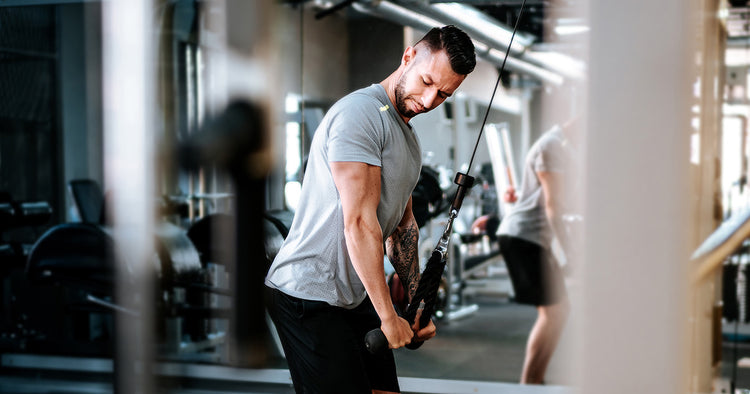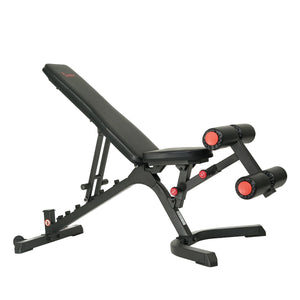There are several formats that one can use when designing a strength program. Some of the most common include Split Routines, Body Part or Muscle Group Workouts, Push-Pull, and Super Sets. To design a successful Strength Program, you must know the end goal you’re trying to accomplish If you have specific training goals like gaining muscle or increasing strength, a more specialized program is meant for you.
Splitting your strength training days is one way for muscles to recover properly and prevent overtraining. Every exercise uses a combination of major and minor muscle groups. Thinking of muscles in blocks or groups in this way makes it easier to set up your training plan. It can also be a successful method for increasing your strength and muscle mass.
Training in split days is not always easy. You must have a well-structured plan to contribute to your results, and you want to avoid creating muscle imbalances by not training your major muscle groups on the designated days. No worries—that’s why we’re here to help!
This article will explore the major muscle groups and which muscle groups you want to combine throughout your week. We’ll also give samples on how to set up your weekly strength program.
6 Major Muscle Groups
The term ‘muscle group’ is just how it sounds–a group of muscles collaborating to maximize results. Fitness experts often break muscles down into 6 MAJOR groups:
- Hamstrings
- Glutes
- Quadriceps
- Back
- Chest
- Trunk (Core)
How to Split Your Workouts
Several variables are used to successfully implement split days.
Alternating: One method to provide yourself with more recovery and rest time between exercises is alternating between entire upper and lower body exercise days. This focuses on minimizing fatigue.
Push/ Pull: To improve recovery and recruitment between exercises, alternating between pushing and pulling exercises is the most commonly used program design. For example, specific days are dedicated to push movements (i.e., chest press, shoulder press) or pull movements (i.e., biceps curls, rows).
*This is my approved method
Supersets Sets: A superset involves two exercises performed back-to-back with little to no rest that stresses two major opposing muscle groups (shoulder press and a row) or the same muscle group.
Programming for Strength and Major Muscles
Once you know how you prefer to split your days, you now have to learn how to program your volume, reps, and sets. According to the National Federation of Professional Trainers (NFPT) the table below describes an optimal approach when performing strength workouts, depending on your overall goal.(1) If your goal is to get stronger, it is recommended that you use 70-85% of your 1 rep max.(2) You perform these lifts for the designated reps (6-8 reps for strength or 8-10 reps for muscle mass) with a rest time of 2-5 minutes (strength goal) or 60-90 seconds (hypertrophy goal).
| Strength |
Hypertrophy |
| Percent 70-85% of 1 Rep Max | 60-80% of 1 Rep Max |
| 6-8 reps | 8-10 reps |
| 2-5 minutes | 60-90 seconds |
Sample Weekly Split Workout Plan
If you’ve gotten this far congratulations, you are almost done completing your first split day strength program! You now know the major muscle groups, you have learned strategies in splitting your workout, and you can program for volume, reps and sets. The final step is seeing how major muscle groups are split and samples of these workouts.
Equipment You Need before you get started:
- Dumbbells
- Barbells
- Bands, stability balls
- Cable machines/ assisted machines
Based on accessibility you can use one of these items or multiple items in a workout at home or in the gym. If you don’t have access to equipment, you can implement bodyweight exercise.
As previously discussed, we said that muscles work together as a block or group. It is common and helpful to work within these groups to achieve your ultimate results. Below are ways to split your major muscle groups:
Legs, Chest, Shoulders + Triceps
These are your major pushing muscles. This is the result of weight being pushed away from your body. Examples of pushing exercises: squats, bench press, military press, or skull crushers.
Legs, Back + Biceps
These are your pulling muscles. Many of these exercises involve pulling weight vertically or horizontally towards your body.
Examples of pulling exercises:
- Deadlifts
- Lat pull downs
- Pull- ups
- Rows.
Deadlifts

Lat Pull Down

Rows

Trunk
The center of your body is used to help you flex, rotate and stabilize. Core exercises can be isolated or superset throughout your workout.
Examples of trunk exercises:
Crunches

Russian Twists

Arm Plank

Sample Workouts
Below are some recommendations on how you can train during the week, based on your current activity level:
- Beginner: 1-2 days
- Intermediate: 2-3 days
- Advanced 3-4 days
At the beginning of your workout always plan an active, dynamic warm up. For a beginner you would work Monday and Thursday. For Intermediates, Monday Tuesday and interchange Thursday or Friday. Remember, this is a suggestive program.
| Monday | Legs + Chest + Shoulders + Triceps |
A1 Barbell squats B1 Barbell bench press |
| Tuesday | Lower Body + Trunk |
A1 Front Squats B1 Walking Lunges Run, Walk, Hike, Yoga |
| Wednesday | Rest/ Active Rest | |
| Thursday | Hip Hinge + Back + Biceps |
A1 Deadlift B1 KB swings |
| Friday | Cardio + Trunk |
A1 bird dogs B1 Inchworms with a push up C1 V ups |
| Saturday | Rest/ Active Rest | |
| Sunday | Rest/ Active Rest | |
1. Periodization for Personal Training Clients. Published May 28, 2019. Accessed February 1, 2023. https://www.nfpt.com/blog/periodization-for-personal-training-clients. Accessed 30 January, 2023.
2. Seo DI, Kim E, Fahs CA, et al. Reliability of the one-repetition maximum test based on muscle group and gender. Journal of sports science & medicine. 2012;11(2):221-225. https://www.ncbi.nlm.nih.gov/pmc/articles/PMC3737872/. Accessed 30 January, 2023.
3. Strength and Resistance Training Exercise. www.heart.org. https://www.heart.org/en/healthy-living/fitness/fitness-basics/strength-and-resistance-training-exercise. Accessed 30 January, 2023.
4. Yang YJ. An Overview of Current Physical Activity Recommendations in Primary Care. Korean Journal of Family Medicine. 2019;40(3):135-142. doi:10.4082/kjfm.19.0038
5. The Benefits of Strength Training and Tips for Getting Started | New Mexico State University - BE BOLD. Shape the Future. pubs.nmsu.edu. https://pubs.nmsu.edu/_i/I111/#:~:text=Strength%20training%20should%20target%20the. Accessed 30 January, 2023.

D’Annette Stephens is the brand owner of D.TerminedFitness, LLC, a Fitness and Consulting entity. She is a certified ISSA personal trainer, NASM sports performance and nutrition coach, philanthropist, and public speaker. D’Annette is pursuing her Masters degree in Exercise Science with a concentration in Strength and Conditioning at Long Island University-Brooklyn.
She is an advocate for education and representation in the Fitness and Sports Performance industries. She specializes in athletic performance enhancement, functional movement, long-term sustained weight loss and sports nutrition




























Add Your Name & Email
Please enter your name and email to continue.We won’t display your email publicly.
1 comment
Hello, thank you so much for all of the good information. The only question I have is what the letters A, B, and C mean in the sample workout. Thank you again, Paul